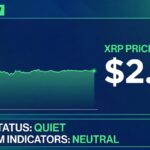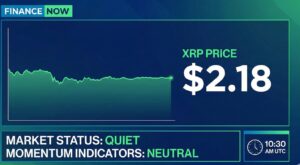If you have been on Twitter recently, you must have certainly heard the term ‘Web3’. It is commonly used in relation to various blockchain technology applications. From cryptocurrency analysts to NFT flippers, the reference to Web3 has become universal on the internet.
The adoption of blockchain technology is growing steadily in Middle East countries like UAE and Pakistan. Thus, an increasing reference to Web3 is expected to follow. But, interestingly, amidst the growing usage, there seems to be little clarity as to the precise meaning of Web3.
If you are new to the blockchain universe, here are some of the basic things you need to understand to get up to speed on Web3.
What is Web3?
Though popularly referred to as Web3, the original term is Web 3.0. The word was coined in 2014 by Gavin Wood and has started gaining momentum since 2021. Web3 essentially refers to a new iteration of the World Wide Web that is based on blockchain technology.
To provide some background, Web 1.0 was the first phase of the internet and was defined by static web pages. Web 2.0 is the current phase and is dominated by social media. Web 3.0, which is expected to be the next phase of the internet, is anticipated to usher in an era of a decentralised online ecosystem. In essence, Web3 aims to bring about a world where platforms and apps are owned by users, rather than a few powerful companies like Google, Facebook, and Amazon.
Distinctive features of Web3
Given that Web3 is based entirely on blockchain technology, many of its features are also derived from this technology. For example, a defining feature of Web3 is encryption. This simply means that data stored can only be accessed by the people that have the necessary permission. Stored data cannot be accessed, changed, or shut down by anyone without the encryption keys, not even the government.
Furthermore, Web3 is characterised as trustless and permissionless interaction. Since blockchain algorithms control the entire interaction process on Web3, one party can easily interact or transact with a second party they have never met before without fear of manipulation. Similarly, parties’ transactions do not require the permission of a third party such as the government.
The aggregate effect of these features is that Web3 removes the need for a centralised system by coding rules of transactions/interactions through blockchain.
Current Applications of Web3
While Web3 is still primarily a work in progress and subject to mass scepticism, it has a couple of observable applications. The biggest of these applications in the Middle East is cryptocurrency. A country like Pakistan is estimated to have more crypto assets than public equity investors. Cryptocurrencies like Bitcoin are created using blockchain technology and have much of their ecosystems in a decentralised structure.
Another popular application of Web3 is OpenSea, a peer-to-peer platform for trading NFTs. OpenSea built on the Ethereum blockchain, is a decentralised platform as the blockchain keeps track of unique NFTs and their respective owners during various trades, and many governance rules are implemented using smart contracts.
Conclusion
In conclusion, Web3 appears to have numerous advantages. The idea, however, has its critics, many of whom believe it is nothing but a marketing term. Hence, there are still many more questions to be answered and a lot more steps to be taken before Web3 can truly cement its place as a viable replacement for the current iteration of the internet.




























